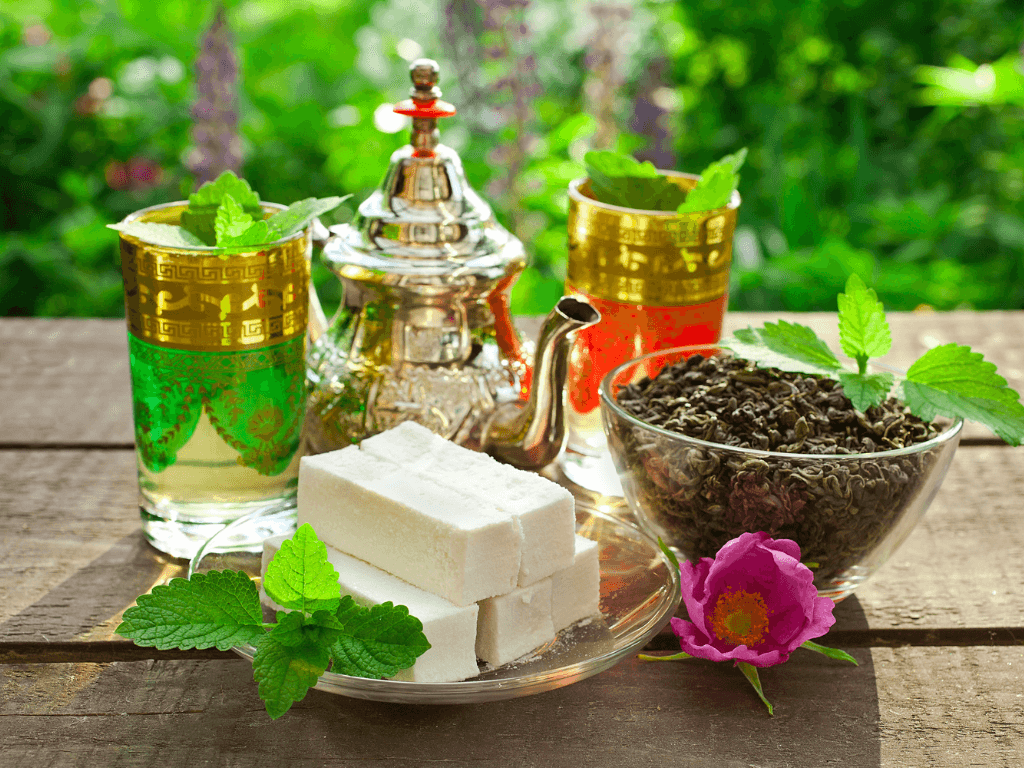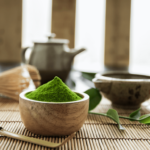Discover the Rich Flavors and Traditions of Moroccan Tea: A Complete Guide

Welcome to our comprehensive guide on Moroccan tea! In this article, we will explore the diverse tastes and customs associated with this beloved beverage. Like this, we will delve into the history of Moroccan tea, the different varieties available, and the proper way to prepare and serve it. Additionally, we will discuss the numerous health benefits associated with Moroccan tea, as well as the customs and etiquette surrounding it. By the end of this guide, you will have a thorough understanding of this delicious and culturally significant drink. Let's get started!
History of Moroccan Tea
Moroccan tea has an extensive past that dates all the way back to the 12th century when traders from China first brought tea to the area. It wasn't until the 18th century, however, that tea started to become a fundamental part of Moroccan culture. During this time, tea was mainly indulged in by the affluent, and it was viewed as a sign of prestige and graciousness. It was customarily served with sugar and mint, which gave Moroccan tea its signature flavor. As time passed, tea became more accessible to the masses, and offering tea to visitors became a mainstay of Moroccan hospitality. Nowadays, Moroccan tea remains an integral part of the country's heritage and culture and is still enjoyed by people across the globe.
The story of Moroccan tea is closely linked to the nation's relationships with its bordering countries, particularly China and Britain. Chinese merchants were the first to introduce tea to Morocco, and it quickly gained popularity among traders. However, it was not until the British began trading with Morocco in the 19th century that tea became widely accessible to the general public. Even today, Moroccan tea is still strongly connected to both China and Britain, and the tea culture in Morocco continues to grow and adapt to different influences. Whether you are a tea enthusiast or simply inquisitive about diverse cultures, delving into the background of Moroccan tea is an exciting journey that will undoubtedly leave you with a newfound admiration for this beloved drink.
Varieties of Moroccan Tea
Moroccan tea is as varied as the country's history. From classic green tea with mint to more intricate mixtures of spices and herbs, there are a variety of options to choose from. Gunpowder tea is a beloved option, lauded for its smoky taste and often used to make Moroccan mint tea. Rosebud tea, crafted from dried rose petals, has a sweet, floral flavor. Nana, a combination of tea and spices, is a popular choice during the colder months when it is consumed to warm up.
When it comes to Moroccan tea, there is something for everyone. Traditionalists may prefer classic blends, while those seeking something different might opt for variations that include citrus fruits like lemon or orange. Berber tea, a mixture of thyme and herbs, is popular in the Berber regions of the country. With so many options to explore, it's up to you to decide which one is your favorite.
How to Prepare Moroccan Tea
Moroccan culture embraces a beloved and iconic beverage: mint tea. To make this aromatic and invigorating drink, you will need a few ingredients and tools. Gather some fresh mint, green tea, and sugar. In addition, you will need a traditional Moroccan teapot, which looks like a teapot with an elongated spout or broad.
Begin by boiling water in the teapot. Afterward, add the green tea and allow it to steep for a couple of minutes. Strain the tea into a separate container and set it aside. Then, add the mint leaves and sugar to the empty teapot and pour the hot tea over it. Allow the mixture to steep for a few more moments. Finally, pour the mint tea into small glasses with some elevation to form a foamy layer at the top. Serve the mint tea with Moroccan pastries or nuts to complete the authentic experience.
Serving Moroccan Tea
For a truly traditional experience, one should follow the ceremonial method of pouring Moroccan tea from a height. This gesture symbolizes respect and hospitality and takes skill to perfect. It is customary to pour the tea three times, each round representing life, love, and death. The first pour is full-bodied, the second is smoother, and the third is the sweetest.
Moroccan tea is often served in decorative glasses, which not only add to the aesthetic experience but also regulate the temperature of the tea. To complete the experience, a plate of sweets or nuts is usually presented alongside the tea.
Drinking Moroccan tea is more than just an activity; it is a symbol of hospitality and togetherness. By serving tea to the entire table, no one is left out and it provides an opportunity for everyone to relax and socialize. Moroccan tea is a beverage that unites people and cultivates culture.
Health Benefits of Moroccan Tea
Sipping on a cup of Moroccan tea not only delivers a delightful and invigorating experience, but it also comes packed with a bevy of health advantages. Moroccan tea is brimming with flavonoids, which are antioxidants that support good health and guard the body against detrimental toxins. These antioxidants assist in warding off cardiovascular diseases, such as heart attacks and strokes, by augmenting blood flow and decreasing inflammation in the arteries.
In addition, Moroccan tea is known to have a soothing effect on the mind and body, making it an excellent option for those who wrestle with anxiety or stress. The mixture of green tea and spearmint utilized in Moroccan tea provides a calming sensation, helping to abate tension levels and encourage relaxation. Additionally, consuming Moroccan tea has been correlated with enhanced digestion and can aid in relieving symptoms of indigestion, puffiness, and nausea.
Besides the physical benefits of Moroccan tea, it is deeply embedded in Moroccan culture and is often enjoyed in social situations. Drinking Moroccan tea is a rite that brings people closer together, breeds community and companionship, and promotes overall well-being. We have also discovered that it is an excellent alternative to coffee and other caffeinated drinks, as it furnishes an energy boost without the jitters or come-down that usually accompanies other beverages.
Customs and Etiquette Surrounding Moroccan Tea
Moroccan tea is more than a beverage; it is a cultural experience. A vital part of hospitality, pouring and sharing tea is a sign of respect. Traditional snacks, like nuts and dried fruits, are often served with it.
When serving tea, there are certain customs and etiquette to follow. The host or hostess should use a specific teapot and pour the tea from a height to create a froth. Generally, it is poured three times, with the third being the strongest. Furthermore, the oldest and most respected guest should be served first.
Drinking tea is also a social custom. It is common to share a pot of tea, taking turns pouring and serving. When drinking, it is important to hold the glass by the rim to avoid burning the fingers. It should be sipped slowly and savored.
Mint is another key element of Moroccan tea culture. It is often added to the brew and is seen as a symbol of hospitality. Guests are typically offered a sprig of fresh mint to add to their tea. This flavor is also popular in Moroccan cuisine, appearing in salads and desserts.
Conclusion
In conclusion, Moroccan tea is not just a drink, it is an essential part of the country's culture and hospitality. From the history of Moroccan tea to its varieties and preparation methods, we've explored it all. Moroccan tea is not only delicious but also has numerous health benefits. Additionally, the customs and etiquette surrounding Moroccan tea are fascinating and add to the overall experience. To the adventurous tea lovers out there, we highly recommend trying Moroccan tea and immersing yourself in the culture and traditions that come with it. Thank you for joining us on this comprehensive guide to Moroccan tea.
Leave a Reply




Related Posts